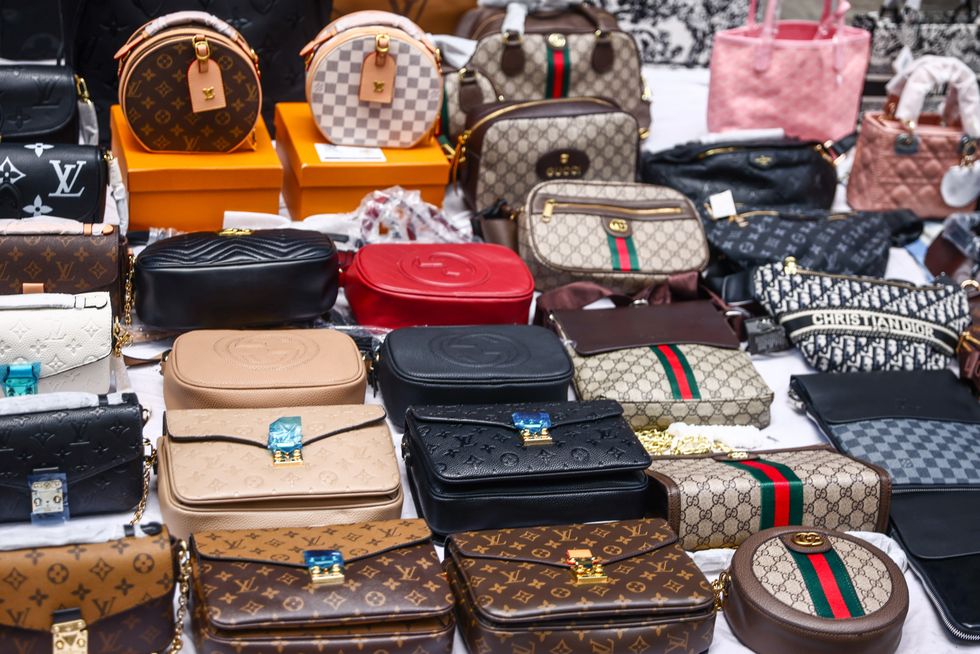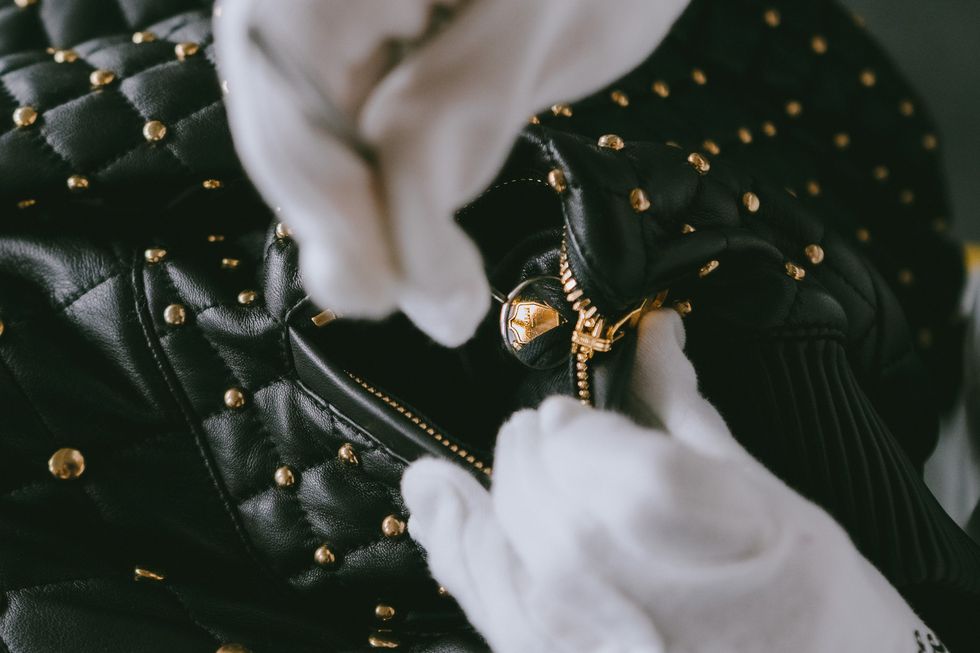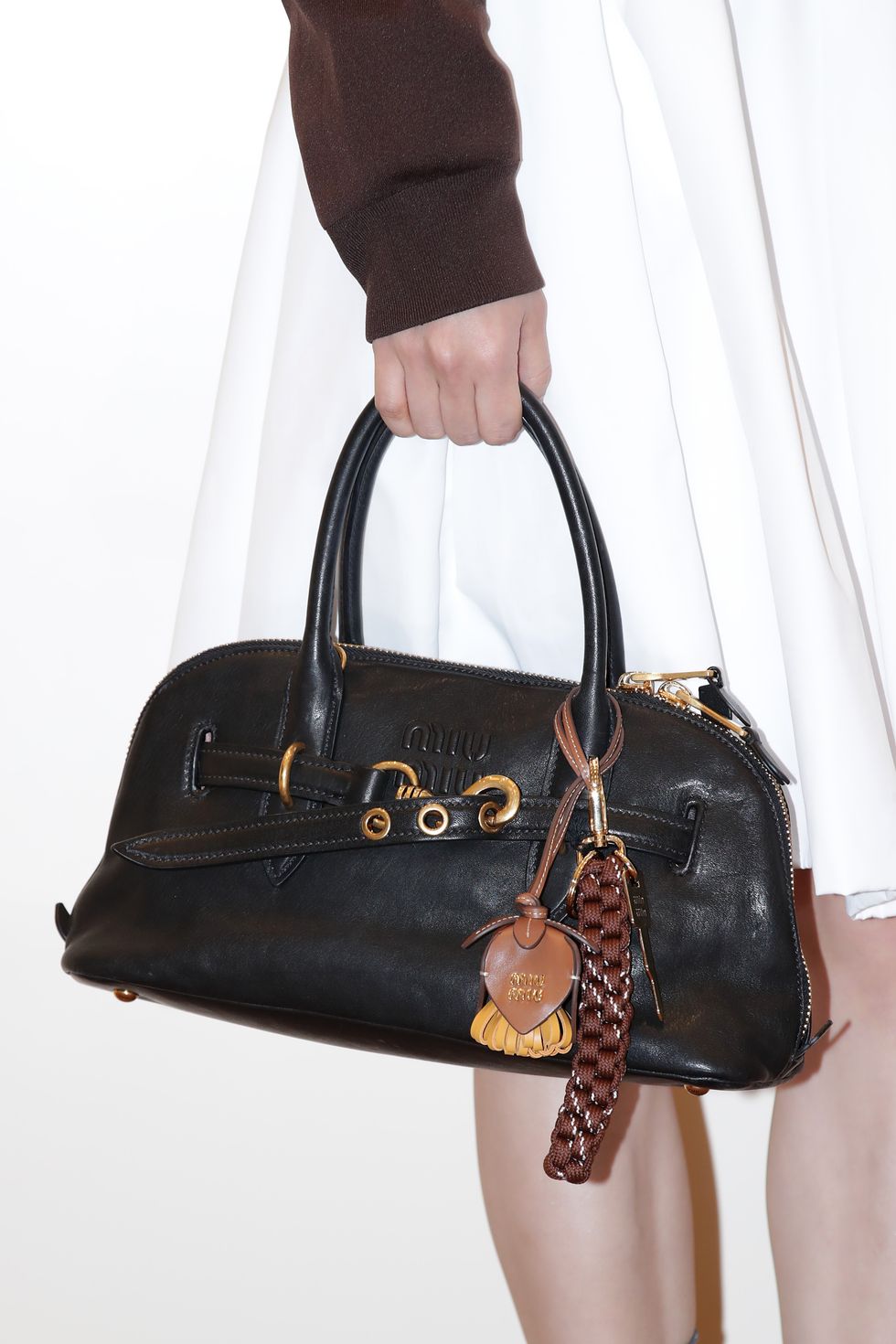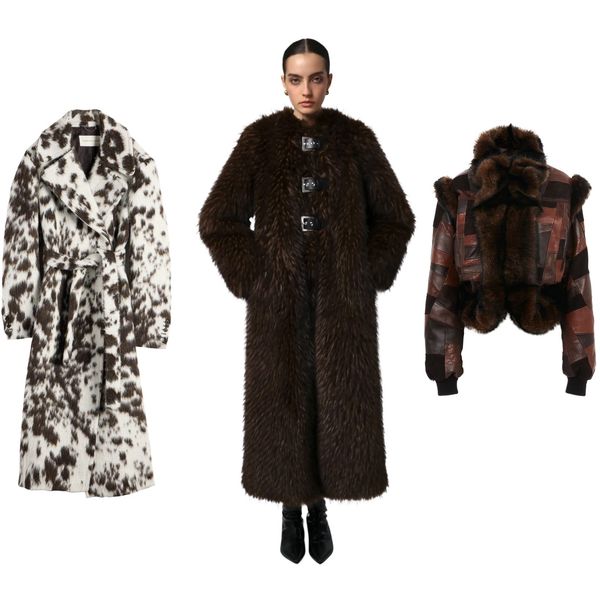How To Spot A Superfake
From X-ray machines to AI-powered analysis, here’s how resale platforms are fighting back against fashion’s $467B counterfeit problem.

Like many of my fellow millennials, Samantha Jones and her infamous Fendi Baguette knockoff on "Sex & The City" was my first encounter with bootleg fashion. I was only 13 when the episode aired and at that time in my life the concept of owning a designer handbag, let alone a counterfeit version, was all foreign territory. But around a decade later, when I spotted my first IRL fake as a twenty-something, the counterfeit market was cast in a harsher light. There, strewn across a bedsheet on a stretch of Canal Street, lay a grim tableau of imitation Chanel, Louis Vuitton and Hermès, accompanied by propositional “Gucci?” grunts and the faint aroma of McDonald’s French fries wafting over from a few doors down. A far cry from SATC’s lighthearted portrayal, and a scene that continues to play out in downtown Manhattan as I type.
Fast forward another ten-or-so years, I’m strolling down a quiet street in Hội An lined with almond trees and glowing lanterns—and stalls upon stalls of fakes. But these are no ordinary imitations. Alongside the expected “LV” monogram canvas and quilted Chanels, I spot a Loewe Puzzle bag. And a Jacquemus Bambino. And Chloé’s Woody tote with its signature logo ribbon detail. And a row of rainbow bright Telfar shoppers. They’re all fake of course, but the very presence of these timely silhouettes underlines an undeniable truth: counterfeiters are broadening their targets. “While Chanel, Louis Vuitton, and Hermès remain the most counterfeited brands globally, and still represent the majority of fake goods we intercept, we’ve seen a marked increase in counterfeit attempts targeting contemporary ‘it’ brands like Jacquemus, Khaite, Toteme, and especially Loewe in recent years,” The RealReal’s Authentication Director Hunter Thompson says. “As these brands rise in cultural relevance and retail price, counterfeiters follow."

NurPhoto/Getty
For Victoire Boyer Chammard, the head of authentication at luxury re-sale platform Vestiaire Collective, the rapidity of social media is a leading cause behind this evolution. “Counterfeiters are able to jump on what's trending, copy those items, and put them out into the market quickly,” she explains.
On top of being a free research tool for counterfeiters who are studying how to fake a trending product, social media also offers a cheap and anonymous platform for selling goods—no need for clandestine car trunks and backrooms when you can DM to complete a transaction. And perhaps even more alarming, it’s also become a platform for influencers to parade their of-the-moment fakes. “Recently, the trend around social content has been to promote looks for less, and Gen Z consumers are flaunting their imitations online, normalizing counterfeits and dupes,” Chammard adds.
The negative implications of fake goods are universal, no matter if it’s a knockoff Birkin or an imitation Khaite satchel from last season. As a baseline, it violates trademark and copyright law and can depreciate a brand’s perceived value. But there are much more insidious downsides at play. The counterfeit market has been linked to terrorism, human trafficking, child labor, drug trade, gang activity, and the use of low-quality, toxic chemicals when making their imitation products. For all of these reasons, heritage fashion houses continue to fight against an ever-growing, shapeshifting industry of fakes (more on that ahead).

Vestiaire Collective
But what about the contemporary labels? “The tricky thing is that newer brands don’t always have the same guardrails in place, which makes them easier targets and long term, it could impact their brand equity,” Sourced By Founder Gab Waller explains. While legacy fashion labels might have better means to combat counterfeit, “contemporary brands and smaller brands might have less resources such as the lack of a dedicated legal team and no authentication technology like RFIDs, as it’s expensive,” Chammard adds.
The rise in these contemporary knockoffs dovetails with the current proliferation of so-called super fakes, which Thompson says creates a clear divide. “Today, there’s a noticeable split in the world of counterfeits. On one end are the obvious fakes—easy to identify thanks to misspelled logos, distorted proportions, and poor-quality materials.” On the other, he continues, is the rise of super fakes. “These have made counterfeiting more sophisticated and widespread, extending beyond just the most exclusive luxury brands.”
If you’re not familiar with the term, it’s basically what it sounds like: hyper-realistic counterfeit. “These items are often marketed as nearly identical to the real thing and are resonating with a growing audience more comfortable with the idea of dupes,” Thompson says. But he offers a caveat: “While they may appear convincing at a glance, they still tend to fall short when it comes to construction, quality, and longevity.”
For the average person (AKA you and I), it’s near impossible to separate the wheat from the chaff when it comes to distinguishing between authentic and super fake. But trained eyes are keeping up with counterfeiters. Chammard describes this current state of affairs as a race against time. “We're seeing an evolution of counterfeiting in the quality of materials and finishes,” she says. “Counterfeiters are always trying to improve, but as they do, so do our process, our knowledge, and our technologies.”
These processes she speaks of are unique to each company working with re-sale, but almost always involve a mix of human expertise and technology. “We have a team of 90 authenticators globally who review items from the tag down to the seam and exchange information based on what they review,” Chammard says of Vestiaire Collective’s process. “Our authenticators, who come from fashion, luxury, and auction houses, undergo an initial three months minimum (practical and theoretical) at our internal expertise school Vestiaire Academy, with a combined total of 60,000 hours.”

Han Myung-Gu/Getty
FASHIONPHILE also has a proprietary training program where authenticators begin at an apprentice level, graduating to the next tier after 1,000 to 1,500 hours of hands-on training, with a total of 8,000 hours to achieve their Master Authenticator status. “As for technology, a few of the tools we currently use include GIA microscopes, refractometers, polariscopes, XRF metal analyzers, custom X-ray machines, RFID scanners, and color measurement tools,” says the site’s director of authentication, Laura Chavez-Sainz.
The RealReal (which shares it has kept 250,000 counterfeit items off the market) uses AI to analyze fine details like material texture, stitching, and logo placement to compare them to known authentic references. “While human judgment remains critical, technology helps us scale our processes, surface inconsistencies faster, and continuously learn from new data,” Thompson explains.
For consumers, the best line of defense against counterfeiters is to buy directly from the brand. But if you’re shopping re-sale platforms or from trusted sourcers, make sure they’ve got a robust authentication process in place that’s clearly communicated. “Authenticity is non-negotiable for us,” Waller says. “When it comes to pre-loved or vintage pieces, we work exclusively with trusted global partners who have strict verification processes in place, backed by advanced tech and in-house authentication teams.”
For contemporary brands working to protect themselves against counterfeit, Thompson explains the harder an item is to replicate, the more protected the brand will be. “Proprietary materials, components, alloys, and standardized indicators such as unique codes or serial numbers make counterfeits more detectable.” Prioritizing transparency is another way brands can protect themselves, according to Chavez-Sainz. “Sharing supply chain traceability builds trust with customers and reinforces brand loyalty and integrity, ultimately discouraging consumers from buying [known] counterfeits,” she says.
With most recent estimates valuing the global trade in counterfeit goods at approximately 467 billion dollars, it’s obvious that fakes aren’t going away. But with more awareness and understanding of their devastating implications (for fashion brands, yes, but for the greater good of society overall), it might be possible to finally reduce the demand for fake fashion.




